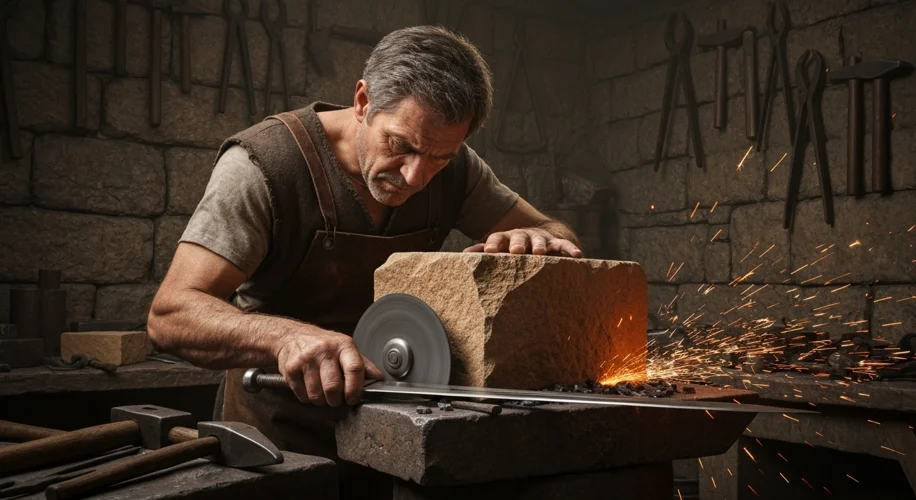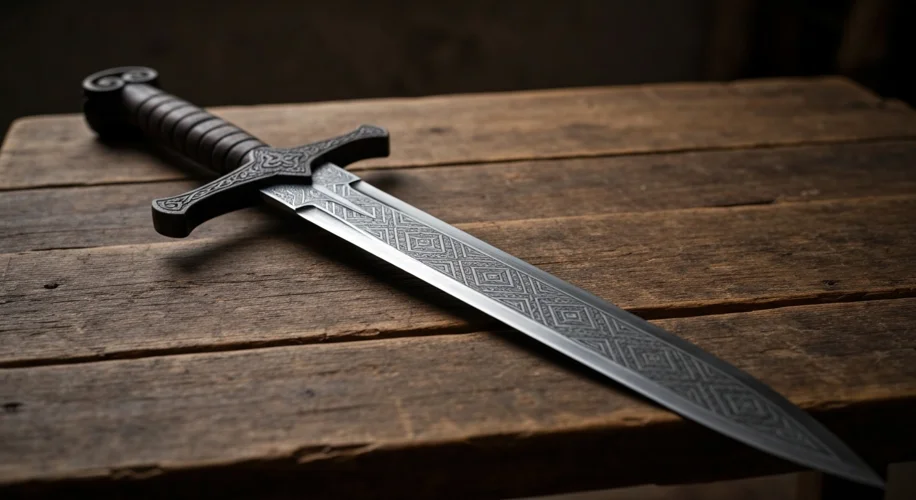The sharp edge of a Celtic blade was not merely a product of brute force, but of meticulous artistry. Beyond the forging and initial shaping, the final stages of a Celtic warrior’s weapon, be it a sword, spearhead, or dagger, involved a series of sophisticated finishing techniques that transformed raw iron into a gleaming symbol of power and status.
Long before the Romans marched into Gaul, Celtic smiths were renowned for their metallurgical skills. Their swords, often described as “La Tene” style, were not only functional but also works of art, boasting intricate hilts and beautifully finished blades. The culture surrounding these weapons was one where martial prowess was highly valued, and a finely crafted blade was a testament to the owner’s wealth and position.
The process began after the blade had been hammered into its final shape and quenched. The surface would have been rough, bearing the marks of the hammer and the unevenness of the forging process. The first step in achieving a superior finish was likely abrasion. Using natural abrasives like sandstone, smoothed river stones, or even abrasive plant materials, the smiths would painstakingly grind away imperfections. This was a laborious task, requiring patience and a keen eye for detail. The goal was to create a uniformly smooth surface, removing scale and pits.

Once a smooth surface was achieved, the next crucial step was polishing. This was where the blade truly began to gleam. Different grades of finer abrasives would have been employed, gradually moving to softer materials like leather or felt, possibly imbued with even finer powders like charcoal or tripoli. The aim was to create a mirror-like finish, reflecting light and adding to the visual impact of the weapon. A highly polished blade was not just aesthetically pleasing; it could also make it harder for an opponent to see the glint of the blade in combat, offering a subtle tactical advantage.
The true artistry, however, often lay in the decorative elements. Many Celtic blades featured decorative patterns etched or incised into the metal. These could range from simple geometric lines to complex curvilinear designs characteristic of La Tene art. The process of incising would involve sharp chisels and gouges, creating grooves that were then often filled with contrasting materials. Sometimes, traces of tin or even gold have been found within these incised lines, adding a brilliant gleam that would stand out against the polished steel.
Another technique, particularly for higher-status weapons, was the application of a patina. This involved controlled oxidation of the iron surface, often achieved by heating the blade to specific temperatures and then quenching it in a particular medium, or by applying specific substances. This could result in a range of colors, from dark blues to blacks, which not only protected the metal from further corrosion but also provided a dramatic backdrop for any decorative elements.
Evidence for these techniques comes from archaeological finds. Analysis of surviving Celtic blades reveals not only the composition of the metals but also microscopic traces of polishing compounds and the characteristic marks left by deliberate abrasion and incising. The sheer amount of labor involved in achieving these finishes speaks volumes about the value placed on these weapons. A blade that took days, if not weeks, to finish was an object of immense pride and prestige.
The impact of these finishing techniques extended beyond mere aesthetics. A well-finished blade was likely more durable, with a smoother surface less prone to cracking or breaking. The meticulous polishing could also have contributed to a sharper, more effective cutting edge. In a society where metal was a valuable commodity and warfare was common, the ability to create weapons that were both beautiful and highly functional was a significant achievement. These finishing touches transformed a tool of war into a cultural artifact, embodying the skill, artistry, and values of the Celtic peoples.

